
Welcome to the follow up to Make Your Own Damn Movie, where I talked about what inspired and motivated me, back in 2010, to start making films again – after a 5 year hiatus - as well as to How to Not Make a Movie – Part 3 – The Production of Zeespiegel , where I described the casting process and pre production of this short film. In this third post about this particular project, I get to talk about the actual production ( shoot, editing and screening(s) of this film)
Here's a tiny recap of where I left off last time:
I was already stressed out before filming had started, partially because of having to deal with a dozen or so of people who I hardly knew. I was supposed to be the director and I hadn't actually directed a movie since 2002. And, to be honest, that project - my first short film An Unforgettable Christmas - was nothing compared to this.
It was early 2010, the shoot was approaching rapidly and I felt I was carrying a huge responsibility. Looking back on this now, it was merely my feeling, my point of view. I was probably the one with the highest expectations. Not so strange, if you are the director, I guess.
And now Onwards to How Not to Make a Movie
As mentioned before, I sensed there were too many people involved. Some of them merely seemed to tag along for the experience, being part of a film. We also had made the (logistical) mistake to pick two locations that were as far apart as you can get in The Netherlands, about 3 hours by car. Now that might not seem like a lot of distance to you, but it definitely is when you only have one actor, one director, one sound person and one camera operator, who can't be in two locations at the same time. This meant we needed more than one weekend (our initial plan) to shoot the film. Looking back on it now, I know that one weekend is little time for a short film, unless the film is very short and your preparation is perfect. In our case, this wasn't the case.
Shooting (mainly outdoor) in Winter – Not Recommended
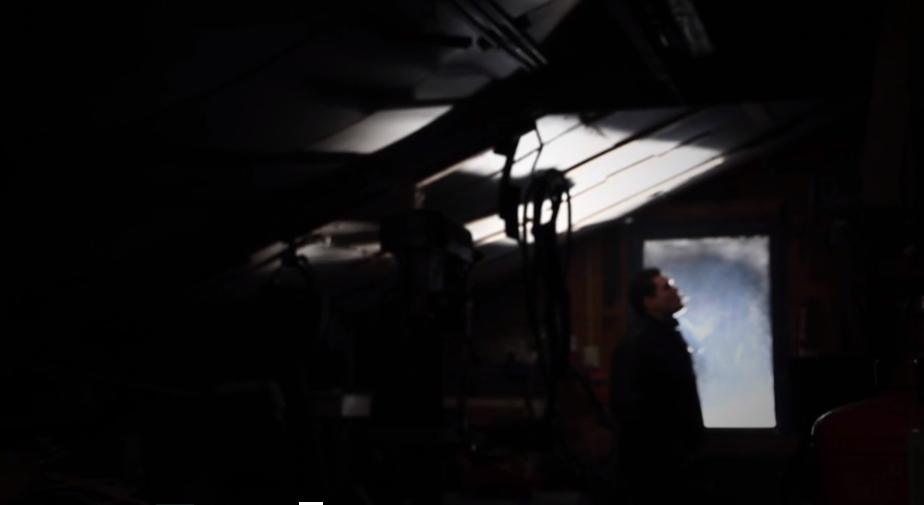
Look at this screenshot taken from the interior of the little shed where we filmed the first weekend. Can you see the ice on the door?
It was early February and – looking back on it now – it was probably one of the coldest winters in years (and about - 5 to - 10 Degrees Celsius that weekend).
I must admit that I felt kind of sorry for our actor – Miro – as we filmed a large chunk of the film outdoors and he wasn't supposed to wear a jacket. Besides that, in the only indoor location we shot, it was hardly warmer than it was outside. In fact, the water pipes were frozen and our plan to use the little kitchen sink (in a scene or two), wasn't going to work out. This was one of many improvisations that we needed to make on the spot. To get back to the actor and the cold, he is – and was – a tough guy. And if you've read my last post, one of the reasons we picked him as our main character was his answer to this question when we first met:
“Would you mind walking into the sea with your clothes on in Winter time?”
Miro: “Sure, no problem.”
So, he acted tough in those wintery circumstances - and sat there for hours in his sweater, while all of us were wearing winter jackets, scarves and - when possible - gloves.
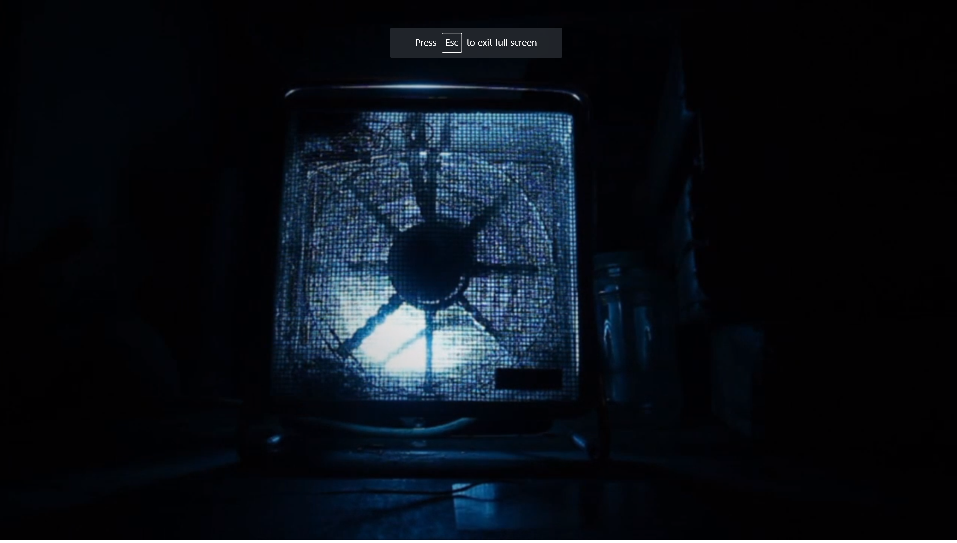
This little heater was all we had, but it couldn't be used outdoors.
There was no running water, nor a toilet on set. Just a hole in the ground
The little shed was a kind of tool shed where the father of one of the crew members spent some time every now and then to do his thing. A hole in the ground was enough luxury for him, I guess.
There were two women on the crew, though. And I'm pretty sure that the above was exactly the reason why they only helped us out on the first day of our shoot. Totally understandable, if I look back on it now.
I remember us talking about getting a portable toilet to the set but we just didn't have the budget. I believe it was possible to go to a neighbor's house and go for a number 1 or 2 if necessary but I'm not even 100% sure about that.
Lights - A more artsy look
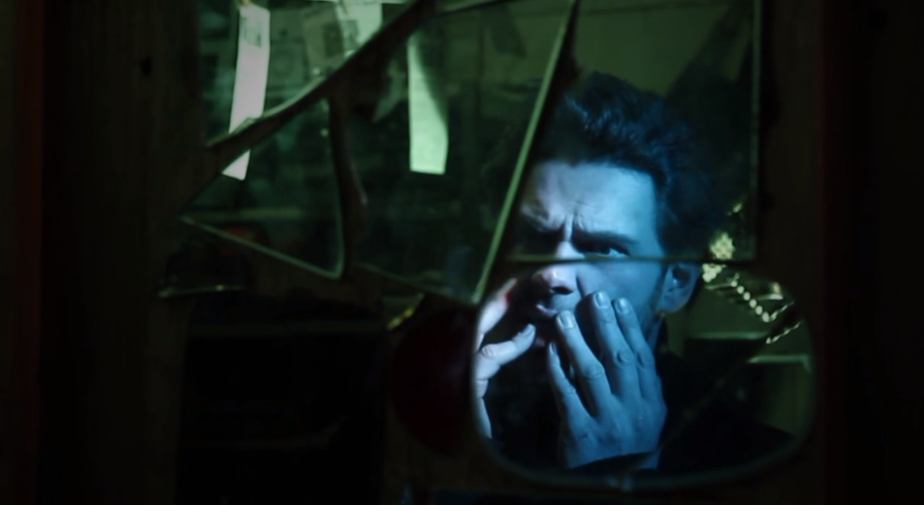
We were lucky enough to have the assistance of a guy with quite some experience in lighting all kinds of small shows and concerts (not sure if he had ever done the lighting on a film set before). He was able to bring a couple of lights and color filters with him. In my opinion, this – combined with using the sea as a location – and thus 'natural lighting' – gave the film a more expensive and professional look than it would have had without the aforementioned.
Sound Recording
We lost our sound recorder on set. Among the film's credits,you can see the 'thief of the sound recorder'.
I don't remember too much about the sound recording itself. I believe we had big plans with it, but eventually - due to losing the recorder - we decided to add a soundtrack, composed by a friend of Fuji and not use any live sound from the set.
Directing
As I mentioned before, I hardy had any prior directing experience. This didn't really help. Although I had prepped as much as possible, mainly by reading filmmaking books, I didn't feel very confident. This - combined with the fact that most of the crew members were friends of Fuji, made it difficult for me. And talking about Fuji, he was not listening too much to me. He might have needed more direction - but he's also a stubborn creative guy, just like me - who needs his freedom. Then again, I learnt over the years that giving other creatives their freedom often makes stuff better so I probably did not care that much.
Miro, the actor, is easy to direct. He's an awesome actor and human being. Once he's in the zone, there's no stopping him. I remember him breaking a couple of things on set - unintentionally during his acting frenzies. Most of these scenes - where he leaves the shed with a typewriter in his hands and enters the greenhouse and clears the table - ended up in the film. They were full of emotion.
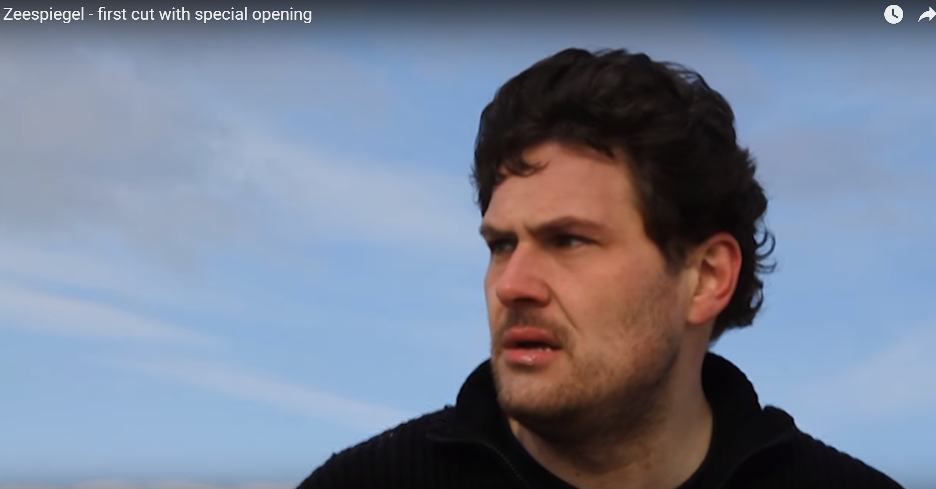
No Storyboard
I don't remember us having a storyboard for the first weekend
I had a screenplay, that we strayed from a lot - due to needing to improvise all the time - , I had made a list of all the scenes (with different colors for days and location), some kind of shot list and that must have been it.
Suffice to say that we learnt from this and tried to come up with a storyboard for the seaside shoot.
I can't remember clearly, but there's a chance that both Fuji and I made a storyboard for that shoot, which made it confusing after all. But - what I've learnt over the years - is that he and I usually managed to get plenty of usable footage, under all circumstances.
Part 2 of the shoot – The Seaside
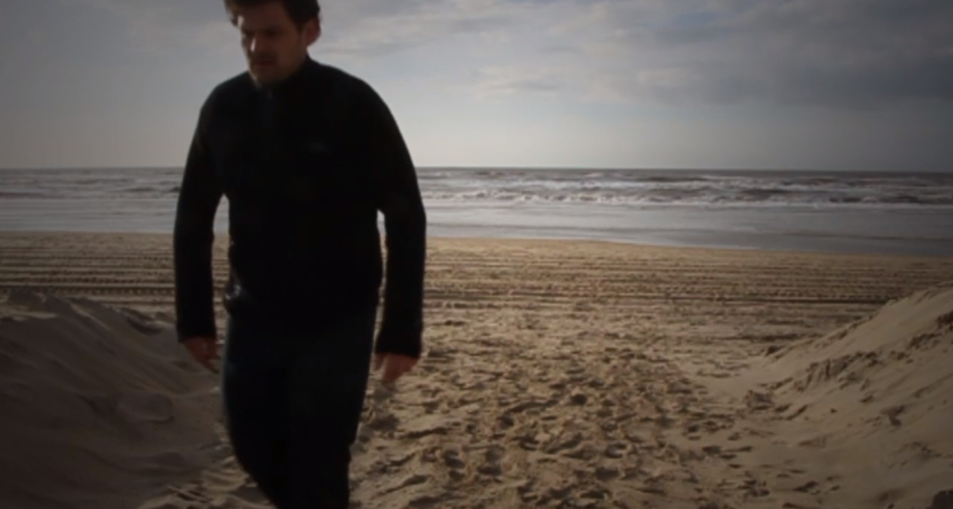
On the day that we had planned to shoot our beach scenes, the weather was pretty awful but we decided to take the risk (impatience of inexperienced filmmakers). Perhaps the weather would be better than predicted? The actor drove from Belgium to the Dutch coast and - in the end - it was just impossible to film. The weather was too wild (wind, rain and cold), not just for us but also for the camera, and we decided to just talk through some storyboard sketches, drink some coffee and eat some grilled cheese sandwiches (as we did during the casting session) and then send him back without shooting a single thing. I remember feeling a little guilty about it but he's a cool guy and it was nice to have some prep time with an actor for a change.
Eventually, for a number of reasons, we had to postpone the beach shoot for about a month. The benefit of this was that the weather had cleared up a lot in those four weeks and the sea water warmed up a little.
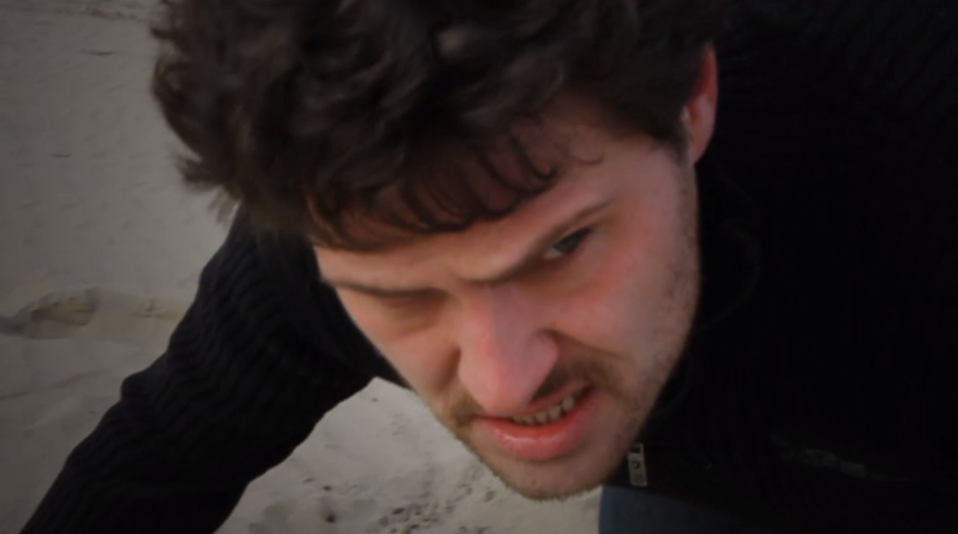
If you look carefully, you will see that the actor has longer hair in the beach scenes than he has in the non beach ones.
Post Production
Editing:
The editing took place in Amsterdam. As I felt like being part of as much of the process as possible (being the director and probably not completely trusting my editor, haha), this meant I had to free up time and money to travel from Utrecht or Gouda (my parent's or my brother's place) over and over again. It might have taken us 10 editing sessions over a period of two months, until we finally managed to come up with an end product that satisfied us enough.
Let's just say that it took us months, before we were able to put something together that had a beginning, a middle and an ending and not too many plot holes.
As is often the case in filmmaking, we had to kill loads of darlings (beautiful shots that didn't fit in the film, didn't add to the story, had no function besides looking good).
Screening this short film
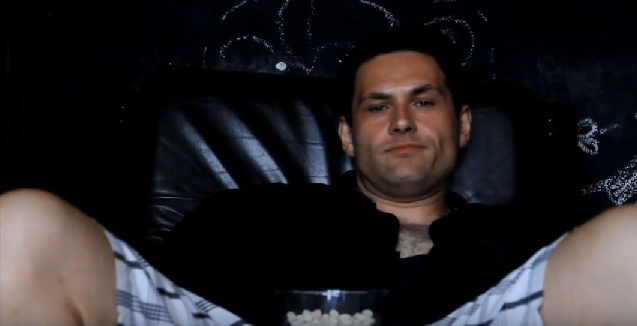
The film was showed in four different places in The Netherlands:
On a small festival in the city of Delft. We were supposed to get 50 euros for it but never received that money.
On the beach ( in Zandvoort aan Zee), where we shot the beach scenes. To be precise, in the beach bar where we had our coffee and grilled cheese sandwich with the actor on the day when the weather made it impossible to film. It took place at Summer time and was a pretty nice day.
In a big church in Den Haag (The Hague), that isn't used as a church any more but is in use for creative purposes. This was the most memorable screening, as we had some creative freedom and budget. In other words, we were not only able to pick this cool looking, kind of dungeon room, but also allowed to turn it into a tiny beach. We put a couple of wheelbarrow loads of sand on the floor and arranged these little beach chairs with wind screens behind them. Combine this with a huge TV, positioned extremely close to the chairs. Then imagine screening the film again and again - with the sound turned pretty loud - from evening to morning, to tiny groups of 1 to 4 people. It was pretty amazing!
Then there was one more screening on my (and my twin sister's) 30th birthday (10-10-2011), in the Melkweg Cinema. This was the place where Fuji worked and where we had held our casting session. By that time, I was probably kind of fed up with this movie (it was half a year after finishing it) and felt like moving on.
Afterwards, Fuji and I vowed that we would never work 8 months on another (short) film again.
THE END
In my upcoming filmmaking post(s), I will start sharing the story behind a project that we worked on in 2012 and early 2013, called 12 Movies 12 Minutes
Lessons learnt
Don't pick two (or more) locations that are way apart, especially if you only have one weekend to shoot and work on a microbudget.
Only work with people who actually want to be part of the project and aren't just there to drink beer on your cost and 'be part of a film project'.
It really helps to have a script – that you actually follow on set – and preferably a storyboard or, at least, a shot list (that you stick to).
and to have an idea of the length of the eventual film (before you start editing)
Be careful filming on the beach (most cameras don't like sand and water)
Patience is key
It's tougher than you think to make a movie with one character, without a voice over or any dialogue (and still tell a story). Making a silent movie might sound easy/ easier but it might actually be the opposite.
And many more lessons, that you might or might not be able to extract from all the above.
All pictures are screenshots from this short film. Except for the last one, that is a screenshot from the 6th film of the above mentioned 12movies12minutes project. Wanna see the film, then go back to the first post in this series - Make Your Own Damn Movie - that I mention at the start of this post
Here's some posts on my earlier film projects from 2002 and 2005
My First Short Film
My Second Short Film
Screenwriting:
Look what my Mom Found! The Screenplay of My First Short Film - Part 1
Look what my Mom Found! The Screenplay of My First Short Film Part 2